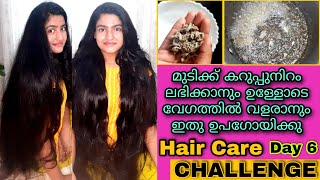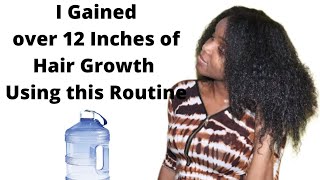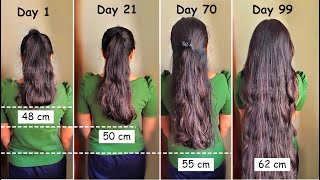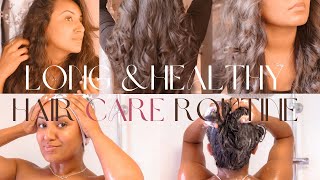5 Hair Practices We Do That Everyone Says Are Bad For Us
 Okay we get it! We get that we shouldn’t use certain products to care for our hair or we don’t need to do certain things to our hair for it to remain healthy. Anything else you want to tell me? No? Good! Now, let me get on with my life and pass me that Blue Magic grease so I can two strand twist my hair!
Okay we get it! We get that we shouldn’t use certain products to care for our hair or we don’t need to do certain things to our hair for it to remain healthy. Anything else you want to tell me? No? Good! Now, let me get on with my life and pass me that Blue Magic grease so I can two strand twist my hair!
Now, I don’t really use Blue Magic grease, but I have a friend who does use it. The problem is that she can’t seem to get her grease without the cashier telling her, “don’t use that stuff. That is bad for your hair…[grabs another item] you should use this.”
We all have gotten so “educated” and “professional” in caring for black hair by researching books, reading websites and blogs, and getting our Doctorate in hair care from YouTube. How about we use our research in ways that do not cause confusion but for the greater good of our hair.
Here are 5 hair practices that we can still do, that some people will say are bad for us:
1. Using harsh water and sulfate shampoo to wash hair
Most of the water that comes from our shower heads and sinks is hard water (contains minerals like iron*, magnesium*, and silicon that creates hair build up).
When you use your clarifying shampoo* you are washing out the build up from the products you used and the hard water as well.
However, research shows that we are not to use sulfate shampoo, because it strips our hair of our natural oils* causing our hair to be dry, which in turn can result in breakage. So what are we to do???
Use your best judgement, clarify your hair when you need to do so, and deep condition afterwards to get rid of dryness.
2. Washing hair forward in the sink is bad
I have been told and read that washing hair forwards or flipping hair over in the sink can create unnecessary knots and tangles. So I’m thinking, “I guess I should get my hair washed at the beauty salon then.” And then I did my research on that.
There is such a thing called “salon stroke syndrome,” which blows my mind! In 2007, there was a 59 year old woman in Maryland who nearly died after her heart stopped as she was getting her hair washed. Crazy right?
“Well, when the head is tilted at a sharp angle, it can pinch the arteries in the back of the neck, which stretches the ones in the front. Those temporarily blocked arteries may cause a stroke [in ages over 55 and high risk patients],”
says David Pearle, MD and Direct of the coronary care unit at Georgetown University Hospital in Washington, D.C. So what gives? The point is do what’s best for you, there is always a theory on something and if you can’t follow contradiction, it never works.
 3. Do not detangle your hair while super wet
3. Do not detangle your hair while super wet
We have been taught that we should detangle our hair when drenched in conditioner and to detangle under the running water.
We have also been taught that hair is weakest when it is wet, which makes it vulnerable to breakage. So when is it the best time to detangle hair? Dry or Wet??
Well, it really depends on how you are detangling your hair. If you are comfortable detangling your hair while it is drenched in conditioner as you are allowing the shower to run along your hair, then do that but be very gentle while detangling to lessen the damage.
Some find it easier to detangle their hair that way, especially when it is longer. You can also detangle your hair while it is damp with your leave in conditioner*.
That way your hair won’t be vulnerable to more breakage, as it would be when sopping wet. Either way, just make sure your hair is detangled before doing any styling to your hair to ensure minimal breakage.
4. Air dry? Or blow dry your hair?
We have learned that our hair would be more susceptible to heat damage and dryness with a blow dryer*. But I have recently learned that air drying could be more damaging to the hair shaft than blow drying the hair. What the what?!
There is a study published in the Annals of Dermatology [article via CurlyNikki] that concludes:
“Although using a hair dryer* causes more surface damage than natural drying, using a hair dryer* at a distance of 15 cm with continuous motion causes less damage than drying hair naturally…”
This finding can very shocking, especially to those who choose no heat mechanisms to dry their hair. So which one is it?
It depends on your preference. If you want to style you hair when dry and add your products to your hair, then use a blow dryer*. However, try not to blow dry to bone-dry, but leave a little moisture in your hair for good measure.
If you prefer air drying, add your leave in while wet then allow to dry until damp. Style your hair while damp, then allow to air dry completely. Both ways are effective for hair health.
5. Daily manipulation
We all say it: don’t manipulate your hair daily. But when you think about it, we all do it. When you have a roller set or flat iron* style, sure it is low manipulation but you are still going to do something to your hair daily. Whether you give your hair a quick comb through or fluff your curls to your liking, you are still manipulating your hair.
Manipulation is not always a bad thing, how we manipulate is what makes the difference. Like using oil to create slip when removing twists is manipulation but safer than yanking through your twists with dry fingers.
No two journeys are alike. One curlfriend will love shampoo and the other will exclusively co wash. One kinky* gal will only air dry and the other will use a t-shirt to dry her hair, then blow dry the rest. At the end of the day do your research to find the best hair practices for you.




